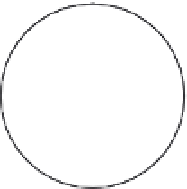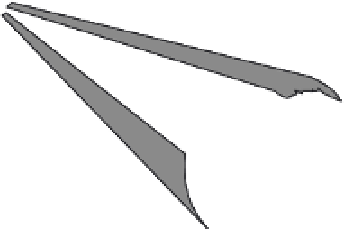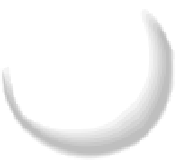Biomedical Engineering Reference
In-Depth Information
eyes so images are clearly seen. The oculomotor system also responds to auditory and
vestibular sensory stimuli. A saccadic or fast eye movement involves quickly moving the
eye from one image to another image. This type of eye movement is very common, and it
is observed most easily while reading—that is, when the end of a line is reached, the eyes
are moved quickly to the beginning of the next line. Saccades are also used to locate or
acquire targets. Smooth pursuit is a slow eye movement used to track an object as it moves
by keeping the eyes on the target. In addition to these two movements, the eye movement
system also includes the vestibular ocular movement, optokinetic eye movement, and ver-
gence movement. Vestibular ocular movements are used to maintain the eyes on the target
during head movements. Optokinetic eye movements are reflex movements that occur
when moving through a target-filled environment or to maintain the eyes on target during
continuous head rotation. The optokinetic eye movement is a combination of saccadic and
slow eye movements that keeps a full-field image stable on the retina during sustained head
rotation. Each of these four eye movements is a conjugate eye movement—that is, movements
of both eyes together driven by a common neural source. Vergence eye movements use non-
conjugate eye movements to keep the eyes on the target. If the target moves closer, the eyes
converge, and if the target moves farther away, they diverge. Each of these movements
is controlled by a different neural system, and all of these controllers share the same final
common pathway to the eye muscles.
Each eye can be moved within the orbit in three directions: vertically, horizontally, and
torsionally. These movements are due to three pairs of agonist-antagonist muscles. These
muscles are called antagonistic pairs because their activity opposes each other and follows
the principle of reciprocal innervation. Figure 13.2 shows the muscles of the eye, optic
nerve, and the eyeball. We refer to the three muscle pairs and the eyeball as the oculomotor
plant, and the oculomotor system as the oculomotor plant and the neural system controlling
the eye movement system.
At the rear of the eyeball is the retina, shown in Figure 13.3. Regardless of the input,
the oculomotor system is responsible for movement of the eyes so images are focused on
Medial Rectus
Superior Oblique
Trochlea
Optic Nerve
Superior Rectus
Inferior Oblique
Inferior Rectus
Lateral Rectus
FIGURE 13.2
The muscles, eyeball, and optic nerve of the right eye. The left eye is similar except the lateral and
medial rectus muscles are reversed. The lateral and medial rectus muscles are used to move the eyes in a horizontal
motion. The superior rectus, inferior rectus, superior oblique, and inferior oblique are used to move the eyes verti-
cally and torsionally. The contribution from each muscle depends on the position of the eye. When the eyes are
looking straight ahead, called primary position, the muscles are stimulated and under tension.
















































































































































